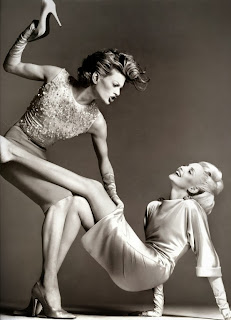Marina Abramovic
Described as “the grandma of
performance art” Marina Abramovic has been an active artist for over three
decades. Her work explores the relationship between performer and audience, the
limits of the body and the possibilities of the mind.
In Imponderabilia two performers,
both completely nude, stand in a doorway. The public must squeeze between them
in order to pass, and in doing so choose which one of them to face. This performance was reenacted
at MOMA in 2010 in The Artist Is Present.
Throughout her performances, Abramavic has “explored passive
aggression, constructing the actions around her rather spectacular body.”
She notes that Art Must Be Beautiful, Artist Must Be Beautiful. During
the early years of performance art female artists used their own bodies to
challenge the institution of art and the notion of beauty. Marina has said in
an interview that during the 1970s, “the commodification of art and artist by critiquing
conventions of and demands for female beauty in art and contemporary culture.”
Elayne Estrada


















































